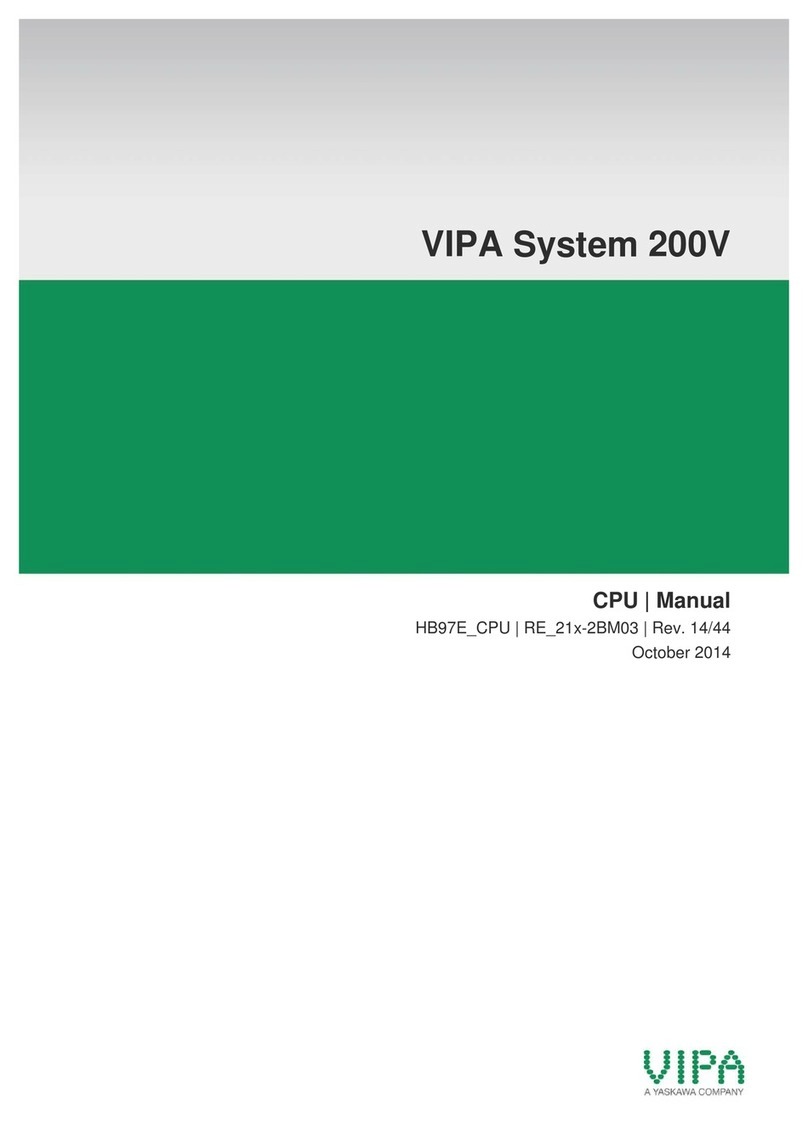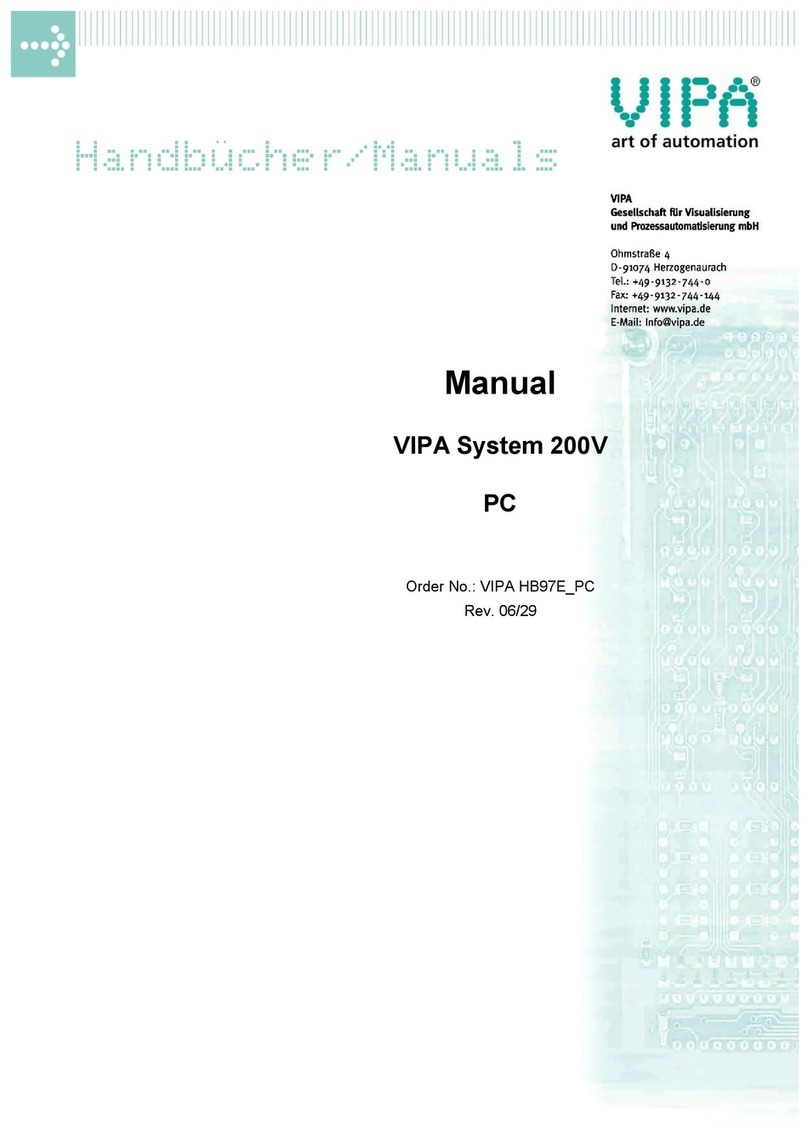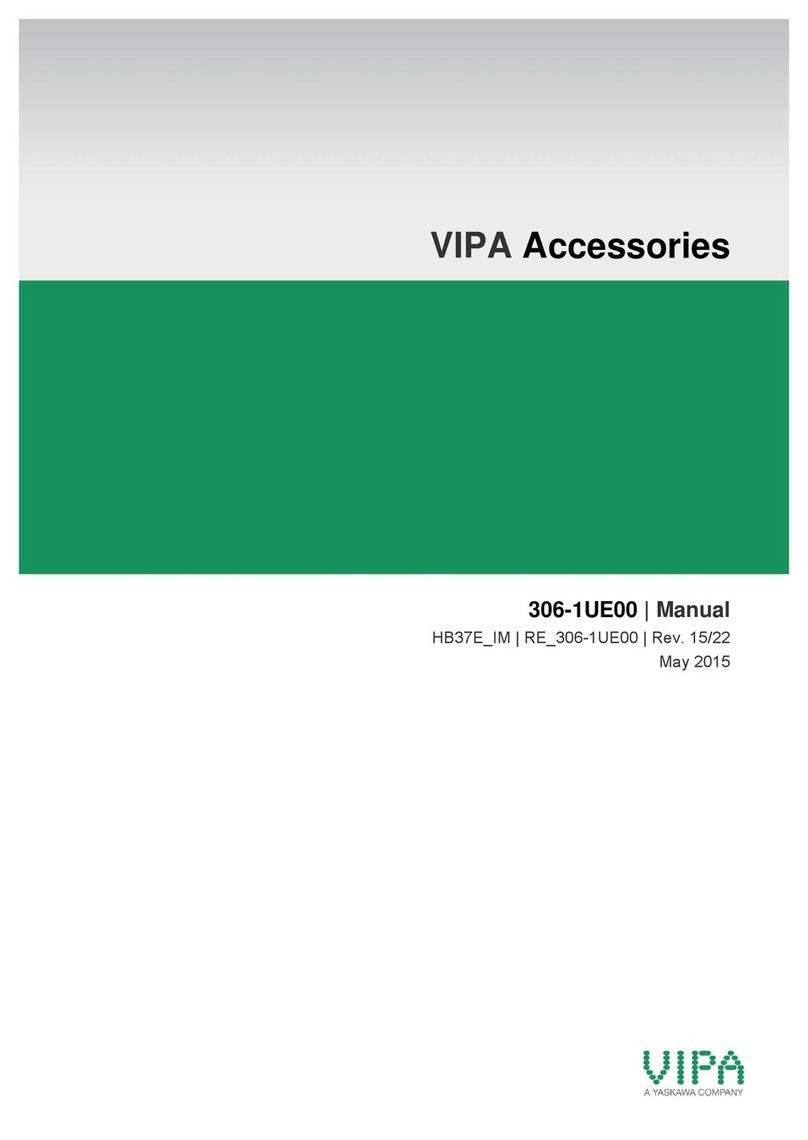
Manual VIPA System 100V Contents
HB100E - CPU - Rev. 12/12 i
Contents
About this manual....................................................................................1
Safety information....................................................................................2
Chapter 1 Basics..............................................................................1-1
Safety information for Users.................................................................1-2
Overview System 100V........................................................................1-3
General Description of the System 100V..............................................1-4
Assembly dimensions...........................................................................1-5
Installation Guidelines ..........................................................................1-7
Chapter 2 Hardware description Micro-PLC CPU 11x ...................2-1
System overview..................................................................................2-2
Security hints for deployment of DIO channels.....................................2-2
Structure CPU 11x ...............................................................................2-5
Components.........................................................................................2-6
Structure of the in-/outputs.................................................................2-15
Circuit diagrams.................................................................................2-20
Block diagram ....................................................................................2-22
Function security of the VIPA CPUs...................................................2-23
Operation modes of the CPU section.................................................2-24
Technical data....................................................................................2-26
Chapter 3 Deployment Micro-PLC CPU 11x ...................................3-1
Installation and Commissioning............................................................3-2
Start-up behavior..................................................................................3-3
Principles of the address allocation......................................................3-4
Fast introduction project engineering ...................................................3-6
Conditions for the project engineering Micro-PLC CPU 11x.................3-9
Project engineering Micro-PLC CPU 11x............................................3-10
Parameter adjustment System 100V CPU .........................................3-12
Parameter adjustment System 100V periphery..................................3-13
Deployment counter and alarm input..................................................3-16
Deployment PWM..............................................................................3-23
Diagnostic and alarm..........................................................................3-26
Project transfer...................................................................................3-28
Operating modes................................................................................3-31
Overall Reset .....................................................................................3-32
Firmware update ................................................................................3-34
VIPA specific diagnostic entries .........................................................3-37
Using test functions for control and monitoring variables....................3-39
Chapter 4 Deployment Micro-PLC CPU 11xDP...............................4-1
Principles..............................................................................................4-2
Project engineering CPU 11xDP..........................................................4-7
DP slave parameters..........................................................................4-12
Diagnostic functions...........................................................................4-15
Status message internal to CPU ........................................................4-18
PROFIBUS installation guidelines......................................................4-20
Commissioning...................................................................................4-25
Example.............................................................................................4-27































